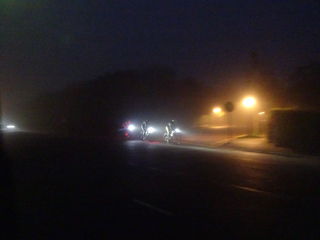Mania
Could Vampires Be Real?
What does the current vampire-mania reveal about our psychology?
Posted October 31, 2016
This Halloween, vampire-mania will hit town, particularly as interest in vampires and vampirism has gripped the popular imagination by the throat in recent years.
But what the various pop culture re-imaginings will not tell you is that the vampire myth seems to have arisen from unexplained real-life events and that 'vampirism' is a rare disease treated by doctors.

In Bram Stoker's original 1897 story, two psychiatrists are Dracula's pursuers. Even today, psychiatrists see patients who fervently believe they are haunted by vampires, and others with symptoms that prompt the diagnosis of 'clinical cases of vampirism' or 'haemosexuality'.
A handful of such cases are reported every decade—a survey of British doctors in the seventies uncovered two instances of clinical vampirism. The syndrome consists of a compulsive interest in blood, confusion about personal identity and an abnormal interest in death—often manifested by necrophilia or necrophagia (pleasure derived from the eating of parts of dead bodies).
Although the full-blown syndrome is rare, aspects of the vampire myth are frequently encountered in psychiatric clinics. For example, lovers in a sexual frenzy may bite each other until blood flows, and sometimes the wound is sucked on during sex. Some people are able to achieve orgasm only if they first taste blood.
'Auto-haemofetishism' occurs in intravenous drug users who are sexually aroused by the sight of their blood filling a syringe. 'Auto-vampirism' is self-mutilation followed by the consumption of blood. One psychiatric case history from the eighties tells of a patient who enjoyed puncturing his neck veins and watching the gushing blood in a mirror. He later moved on to piercing an artery and lying on his back, so he could catch the spray of blood in his mouth and drink it. Another psychiatrist describes how a woman stored her own blood to look at it in times of stress, as this calmed her. Between the wars a murderer confessed to visiting slaughterhouses regularly to drink glasses of warm blood to keep him in good health.
Necrophilia—sexual acts with the dead—is a rare but occasionally recorded phenomenon. Bram Stoker would have been aware of some gruesome 19th-century cases, particularly in France. In 1827 a Frenchman named Leger mutilated the genitals of a young girl and drank her blood after necrophilia; in 1845 another, who became known as Sergeant Bertrand, dug up corpses to aid his masturbation; in 1886 a third Frenchman, Henry Blot, desecrated the grave of an 18-year-old girl and sexually abused the body.
Peter Kurten, a German who committed his first murder at the age of nine, stabbed sheep while sexually molesting them, and indulged in necrophiliac and vampiristic activities with numerous humans. The Marquis de Sade could not enjoy sex unless he saw blood on his victims and would therefore prick them with a sharp instrument. Even today, prostitutes report that some clients ask them to play the part of a corpse.
Perhaps the only comfort one can derive from this terrible litany is that these symptoms of vampirism are extremely rare. But this itself presents a puzzle: if vampirism is so exceptional, why should almost all cultures throughout history possess a version of the legend? The earliest known depiction of a vampire appears on a prehistoric Assyrian bowl. One explanation is that some features of vampirism may have been more common in earlier times. For example, necrophilia was practised in ancient Egypt—in order to discourage sexual intercourse with the corpses of beautiful women, their bodies were not given to the embalmers until several days after death.
King Herod was said to have had sexual relations with the preserved corpse of his wife for seven years after her death, and similar stories are told of Charlemagne and other kings. Psychoanalysts argue that necrophilia is the extreme manifestation of a frantic attempt to deny the death of a loved one—a refusal to accept the permanent loss.
Another recurring manifestation of vampirism, it could be argued, is the belief in the life-giving benefits of drinking blood. In Catholic churches to this day Christ's 'blood', symbolised by wine, is drunk according to Jesus' exhortation: 'Whoso eateth my flesh, and drinketh my blood, hath eternal life; and I will raise him up at the last day. For my flesh is meat indeed, and my blood is drink indeed. He that eateth my flesh, and drinketh my blood, dwelleth in me and I in him.' (John 6:54-56).
Apparent outbreaks of vampirism have cropped up periodically in Europe. For example, there were numerous sightings of the 'walking dead' in Hungary and neighbouring regions from 1720-1730, which have never been satisfactorily explained. One theory is that at a time when many plagues swept the land it was common for bodies to be hastily buried in shallow, easily exposed makeshift graves. Someone taken to be dead and buried alive by mistake could have awakened, struggled to the surface and wandered around clad in mud-smeared and blood-stained shrouds, so fuelling the legend.

Premature burial may have been quite common: Herbert Mayo, a 19th-century professor of anatomy, whose work was known to Bram Stoker, demonstrated that one person in every 200 could expect to be buried alive. Doctors at that time had no sure proof of death short of putrefaction: this was noted by the British Medical Council as late as 1885, not long before Bram Stoker began work on Dracula.
To someone with little knowledge looking at a corpse, for instance when a body was exhumed, many of the normal signs of biochemical change and decomposition could easily have been mistaken for evidence of vampirism: after death, hair and nails continue to grow; bacterial action means the body can become warm and blood liquefy again; cheeks redden, and eyes that were closed can reopen.
It is also possible that erythropoietic protoporphyria, a rare genetic disease, was confused with vampirism. This fatal disorder induces the body to produce an excess of porphyrins—chemicals formed during the manufacture of haemoglobin, the oxygen-carrying pigment in the blood. This results not only in redness of the eyes, skin and teeth, but also a receding upper lip and cracking skin which bleeds when exposed to light. It has been suggested that physicians of the day could only treat such patients by secluding them from the light of day, and persuading them to drink blood to replace that lost by their bleeding. All these features, plus the episodes of insanity to which victims were prone, could have contributed to the mythology of vampires.
While there may be down-to-earth explanations for vampire stories, they cannot account for the grip the myth has on our imagination. The theme has inspired popular films and novels, and been widely exploited in serious literature by De Sade, Goethe, Byron, Baudelaire, Keats and Coleridge.
The vampire is the freest of all characters, doing just what he or she pleases. With the combination of necrophilia, necrophagia, serial killing, blood, sex, death and cannibalism, every possible taboo is violated. Perhaps Bram Stoker's creation simply anticipated the modern hero, who must be capable of great feats, both violent and sexual. Stoker mixed this seductive cocktail with the modern disillusionment with religious answers to the problem of the afterlife. Vampires live on after death, but do not go to heaven or hell; an ambiguous way to come to terms with death in a post-religious age.
The powerful paradox symbolises the wish for life and renewal, accompanied by the monstrous self-centred desire for survival, even at the cost of another life. Perhaps the vampire is becoming the image of our times: a portrait of the struggle for life at the expense of others.
Raj Persaud and Peter Bruggen are podcast editors for the Royal College of Psychiatrists and also now have a free app on iTunes and Google Play store entitled "Raj Persaud in Conversation." See: itunes.apple and play.google. Also, Raj Persaud's new novel is 'Can't Get You Out Of My Head'.
A version of this article first appeared in The Independent Newspaper. All these stories and more, about vampires and other creatures such as werewolves, can be found in Dr Raj Persaud's book 'From The Edge of The Couch' published by Bantam Press.




